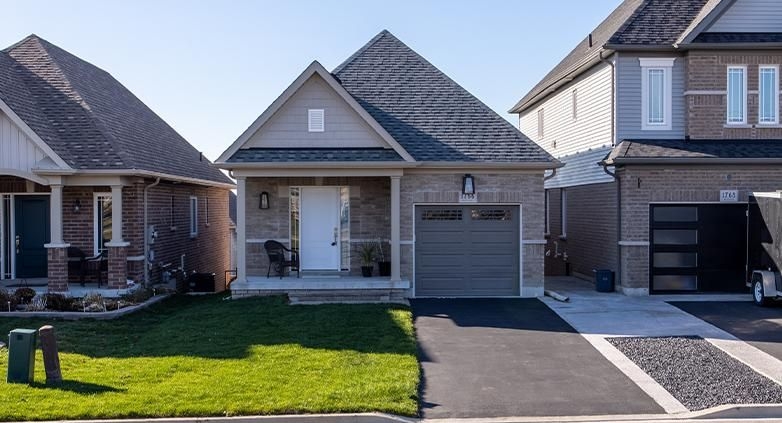Replace Asphalt Driveway – 12 Steps to a Flawless New Surface
Considering replacing your asphalt driveway? Understand the causes of degradation and why opting for a full replacement offers a more lasting and effective solution than mere repairs.
A well-executed asphalt driveway replacement not only revamps your home’s curb appeal but also addresses underlying issues causing deterioration. By understanding factors like weather exposure, heavy usage, and inadequate maintenance, you can make informed decisions. Choosing to replace ensures a robust, long-lasting driveway, free from the recurring issues associated with temporary fixes.
Explore our comprehensive 12-step guide on replacing your asphalt driveway, turning this daunting task into a manageable and rewarding home improvement project.
How to Replace an Asphalt Driveway
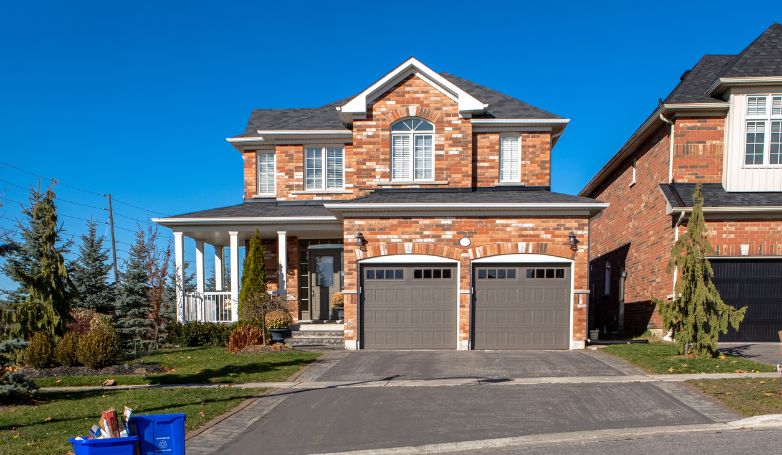
Revamping your driveway with a fresh layer of asphalt can do wonders for both functionality and curb appeal. Whether you’re tackling this as a DIY project or hiring professionals, the process involves several key steps to ensure a durable and aesthetically pleasing result. From meticulous preparation to the final touches, let’s break down the essential stages of replacing your asphalt driveway to guide you through the journey of transforming your driveway into a resilient and eye-catching feature of your home.
1. Preparation
Start by gathering all the tools and materials you’ll need – everything from safety gear to the asphalt mix. Measure the area you plan to replace, get any required permits, and give your neighbors a heads up about potential disruptions. Adequate preparation sets the stage for a smoother process, ensuring you’re well-equipped for the task ahead.
2. Demolition
Fire up the heavy machinery and systematically remove the existing asphalt. Responsibly dispose of debris and take a close look at the underlying layers for any needed repairs. A thorough demolition lays the foundation for a successful driveway replacement, and it’s the first step in transforming your driveway.
3. Grading and Excavation
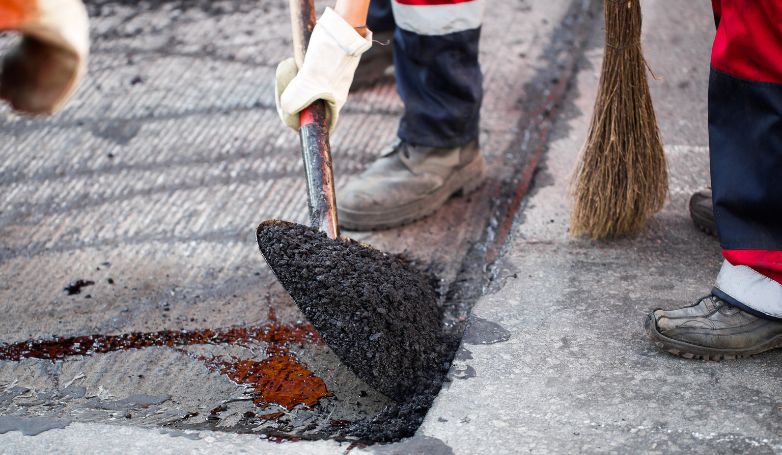
Focus on achieving the perfect slope and drainage by excavating the area to the required depth during the process of replacing your asphalt driveway. Get rid of any soft or unstable soil, setting the stage for a stable foundation. Precision in grading and excavation ensures longevity and functionality, ensuring your newly replaced asphalt driveway stands the test of time.
4. Subbase Installation
Lay down a robust subbase material, like crushed stone, to create a solid foundation. This layer is key to supporting the weight and traffic that your asphalt will endure over time. Think of it as the backbone of your new driveway, providing the necessary strength for the layers to come.
5. Edge Restraints
Install edge restraints along the perimeter to prevent any material shift. This not only adds to the structural integrity but also contributes to a polished and well-defined appearance. Picture it as the frame of your driveway, holding everything together and adding a touch of finesse.
Read more: Infrared Asphalt Repair
6. Base Course Placement
Lay a substantial base layer of coarse asphalt, providing additional support and stability. This is the heavy lifter of the process, fundamental to the overall strength and durability of your new driveway. Think of it as the solid foundation upon which everything else will be built.
7. Asphalt Installation
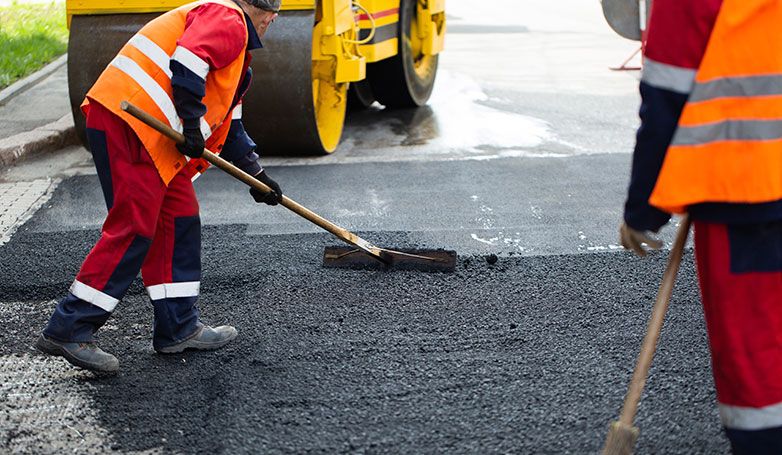
Apply the hot mix asphalt evenly across the prepared surface, using professional equipment for precision. Ensure a smooth and level application – it’s not just about looks; it’s about functionality too. This step is where your new driveway starts to take shape.
8. Compaction
Roll up your sleeves and use a heavy roller to systematically compact the material during the process of replacing your driveway. This step eliminates air gaps and promotes a dense, durable surface. Thorough compaction is vital for preventing future issues, ensuring your replaced asphalt driveway stands strong against the tests of time and traffic.
9. Curing
Give your newly installed asphalt the time it needs to cure properly. This critical step ensures the material achieves optimal strength and stability before regular traffic takes its toll. Think of it as letting your driveway build up its strength before entering the big leagues.
10. Sealing
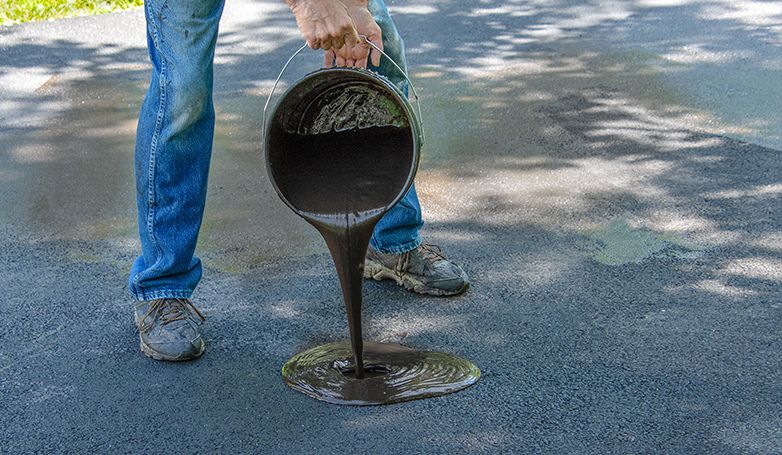
Protect your investment by applying a high-quality sealant. This shield defends your asphalt from the damaging effects of UV rays, water, and other environmental factors. Proper sealing not only enhances longevity but also keeps your driveway looking sharp and ready to face the elements.
11. Striping and Marking
If you fancy some flair, add striping and markings for designated parking spaces or other purposes. This step not only adds functionality but also enhances the visual appeal of your driveway. Think of it as putting the finishing touches on your freshly paved canvas.
12. Cleanup
Complete the process by clearing away any excess materials, tools, and debris from the site. Leave the area in a clean and organized state – it’s the final touch for a successful asphalt driveway replacement, and it’s the last step before you can proudly enjoy your revamped driveway.
Benefits of a Replaced Asphalt Driveway
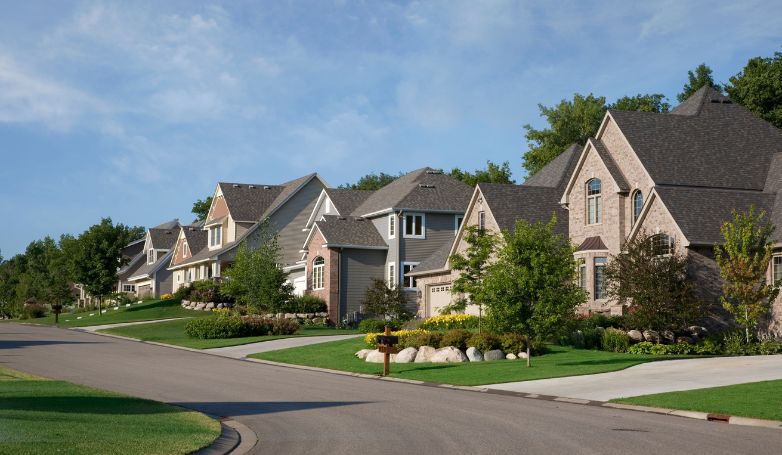
Investing in a replaced asphalt driveway brings a multitude of benefits, enhancing not only the visual appeal of your property but also its overall functionality. The decision to upgrade your driveway goes beyond mere aesthetics, offering advantages in terms of durability, maintenance, property value, and environmental considerations.
Enhanced Aesthetics
A replaced asphalt driveway often provides a fresh and appealing look to your property. The new surface can contribute to the overall visual appeal, complementing the architecture of your home.
Improved Durability
A new driveway tends to be more durable than an older, worn-out one. It can better withstand the elements, heavy traffic, and fluctuations in temperature, leading to a longer lifespan for your driveway.
Lower Maintenance Costs
It generally require less maintenance compared to older ones. With proper installation and regular care, you can reduce the need for frequent repairs and save on maintenance costs over time.
Elevated Property Value
Upgrading your driveway can enhance the overall value of your property. Potential buyers often appreciate well-maintained and aesthetically pleasing features, such as a newly replaced asphalt driveway, which can contribute to a higher resale value.
Environmentally Friendly
Depending on the materials used, a replaced asphalt can be more environmentally friendly. Some modern paving materials are designed to be more sustainable, reducing the environmental impact associated with traditional driveway construction.
Signs your asphalt driveway needs repairs
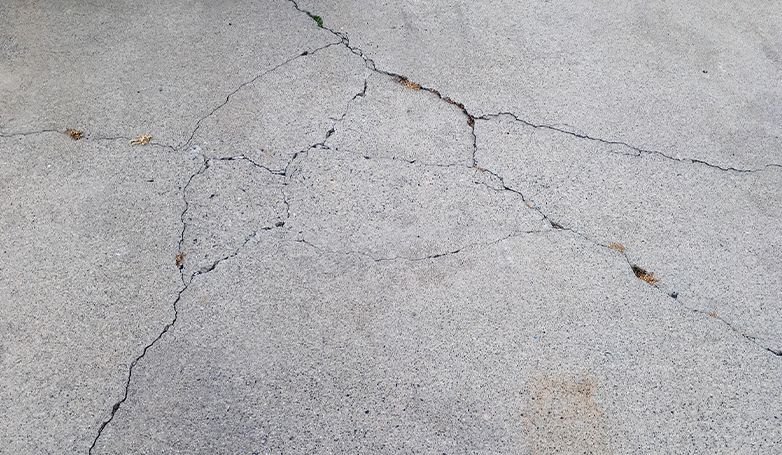
The present condition of your driveway surface can tell a lot about whether you should resurface it or do a complete overhaul and replacement. The following guide will lead you through some of the warning indications that you need to replace asphalt driveway for your property:
Standing water
Potholes, large cracks, and portions of a sunken asphalt driveway can all collect rainwater. So, if you allow water to penetrate the foundation of your driveway, it can result in permanent structural damage.
At the same time, standing water can trigger the surface of your driveway to erode if it cannot drain correctly. Although standing water is not only an indication of structural damage, it can also lead to more pavement issues if left unchecked.
In a nutshell, poor drainage can signal that you need to replace your driveway.
Alligator cracks
When a sequence of overlapping cracks appears in your driveway, they begin to separate the pavement into small, fragmented portions. This issue is what is referred to as alligator cracking.
This type of crack could indicate that the subbase beneath your pavement is no longer stable. And when this lower layer breaks, it can lead to damage to the surface layer.
If this type of problem occurs, it is an indication that it’s time to rip out the old driveway and replace it with a new sub-base and topcoat.
Raveling
Asphalt is made up of a binder and aggregate mix. However, the aggregate can break away from the binder with time. This is evident when loose gravel is on the driveway’s surface, or you may notice that your driveway is beginning to pit.
Raveling can be treated, so address it right away if you notice it early enough because if the situation isn’t addressed, it can quickly become out of hand. Initially, raveling loosens fine aggregate particles, but the surface gets rougher when larger pieces split away. You can either choose to replace asphalt driveway if resurfacing or seal coating can not remedy the issue.
Missing chunks
Large cracks that evolve into alligator cracks can rip pieces of your driveway apart, leading to large potholes, which is the last thing anyone wants on their asphalt.
These spots are hazardous to automobiles and small children or homeowners who may fall or injure themselves when crossing the driveway.
Therefore, if you notice a larger chunk falling off your driveway, it may be time to replace your asphalt driveway.
When Should You Seal, Resurface, or Replace Your Asphalt Driveway?
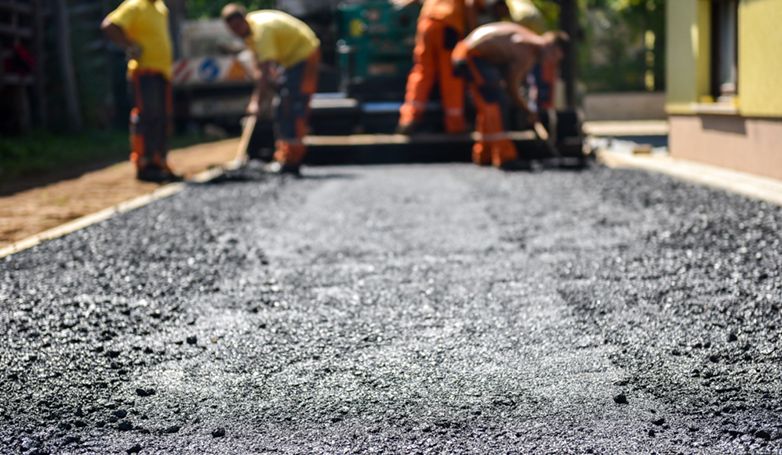
Resurfacing, seal coating, or replacing is what you should consider before your driveway issues get any worse.
Here are more details on when your asphalt driveway should be sealed, resurfaced, or replaced, so you can figure out which type of repairs your property requires:
Sealcoat
Sealcoating is the process of applying a liquid sealant to an old asphalt pavement surface in order to seal it and fill cracks. The procedure protects the sublayers and base from the elements while also delaying the need for a new driveway.
You should consider seal coating if the lustrous appearance of your asphalt driveway is fading. You should also consider applying a sealant if there are minor surface flaws, like cracks, that render your driveway uneven or rough in appearance.
Resurface
Resurfacing is the process of removing the top layer of asphalt and replacing it with a new one. Resurfacing your driveway can help it last an additional eight to fifteen years. It is different from when a contractor replace asphalt driveway.
When your driveway has enormous ruts, significant cracks, and potholes but is still functional, you should consider resurfacing it.
Replace
When an asphalt driveway is replaced, the whole surface is demolished and removed to the ground level. All of it will be taken out and replaced with new material.
So, if your driveway has been fully damaged by negligence, weather, or heavy use to the extent where it is no longer functional, you will require a complete replacement. Concurrently, you can also consider a replacement if you want to make substantial modifications to your property. For example, suppose you want to shift your driveway to a different location.
Installing a new driveway offers a smooth, comfortable, safe surface that you will enjoy every day.
What is the Cost to Replace Asphalt Driveways
| Factor | Range/Cost |
|---|---|
| Cost per Square Foot | $2 – $5 |
Asphalt driveways typically cost between $2 and $5 per sq foot to lay. However, many factors influence the pricing, including location, material quality, the required depth of material, driveway size, and contractor.
Asphalt driveway installation costs around half as much as concrete, making it a cost-effective choice for homeowners looking to make the most of their budget. This price may be the same or differ from when you want to replace asphalt driveway; ultimately, a seasoned paving contractor can advise you accordingly.
FAQs about Replace Asphalt Driveway

Considering replacing your asphalt driveway but have questions about the process? Delve into these frequently asked questions for insights into overlaying, resurfacing, and the nitty-gritty of DIY removal.
Can you put new asphalt over old asphalt?
Yes, it’s possible to overlay new asphalt over old asphalt if the existing surface is in reasonably good condition. However, for a more lasting result, it’s often recommended to remove the old layer and address any underlying issues.
How do you resurface an old asphalt driveway?
To resurface an old asphalt driveway, clean and repair any damage, apply a bonding agent, add a new layer of asphalt, and then compact it. This process can extend the life of the driveway and improve its appearance.
How do I remove an asphalt driveway myself?
To remove an asphalt driveway yourself, use a jackhammer or heavy-duty equipment to break it up. Afterward, clear the debris, and consider renting a dumpster for disposal.
What machine is used to remove asphalt?
A milling machine or asphalt zipper is commonly used to remove asphalt. These machines grind and remove the old asphalt, allowing for a clean surface for replacement.
What happens to asphalt when it is replaced?
When asphalt is replaced, the old material is typically removed and recycled. The reclaimed asphalt can be reused in new projects, contributing to sustainability in road construction.
How long does a asphalt driveway last?
The lifespan of an asphalt driveway varies depending on factors like maintenance, climate, and usage. On average, a well-maintained asphalt driveway can last 15 to 20 years or more. Regular sealing and timely repairs can extend its longevity.
Conclusion
Replacement is a good choice, especially if your asphalt driveway has deteriorated to the extent that it can not be managed. However, it is wise if you seek the assistance of an expert paving contractor to advise you accordingly. A professional contractor will advise you on the exact installation cost, the perfect timing for the project and can also help you carry out the project so it can withstand the test of time.

